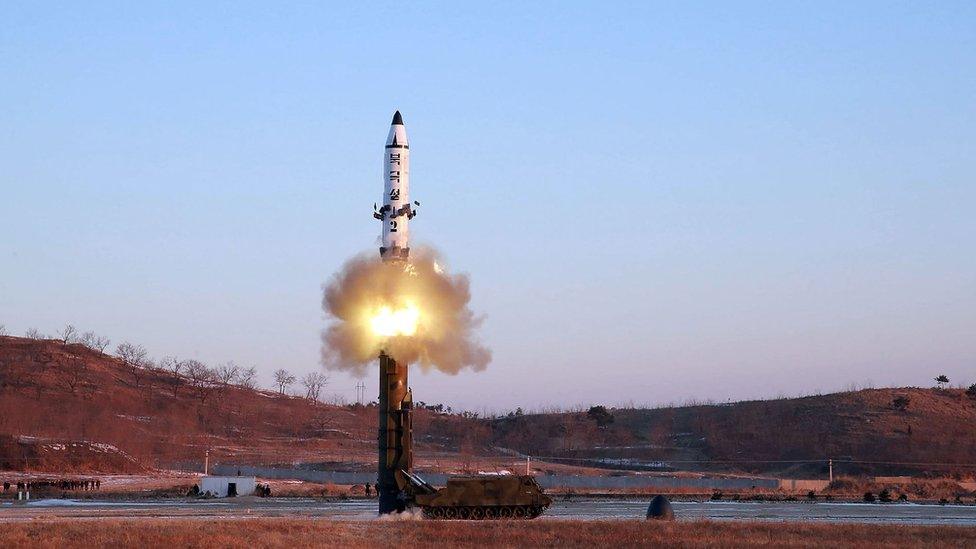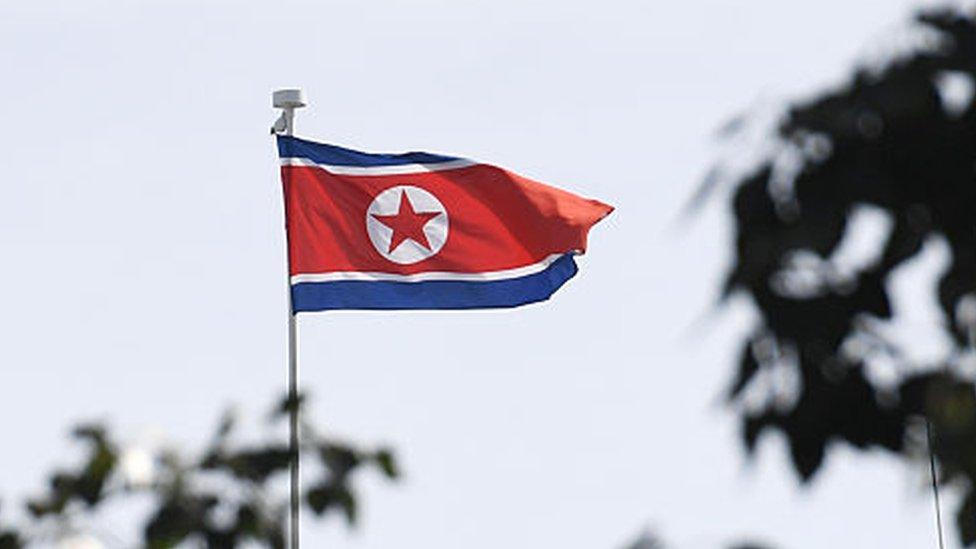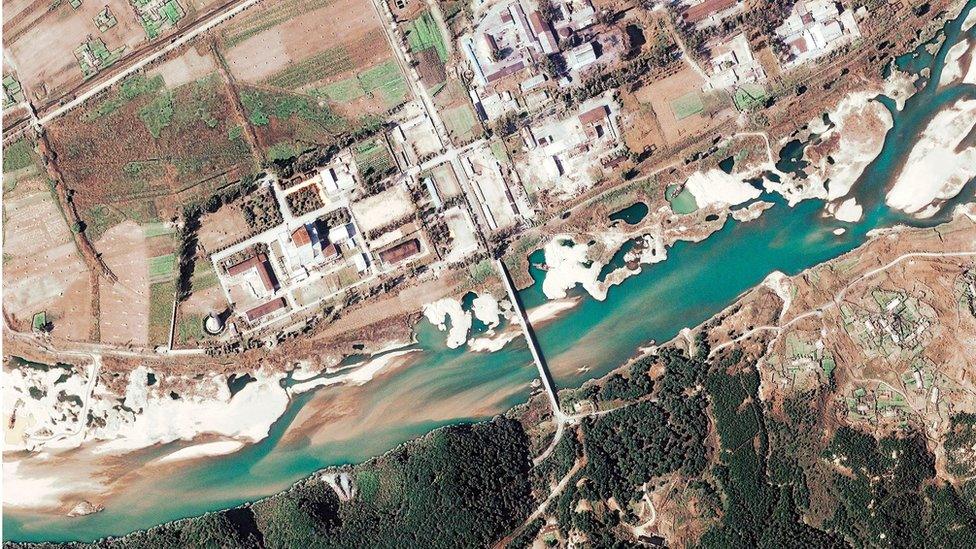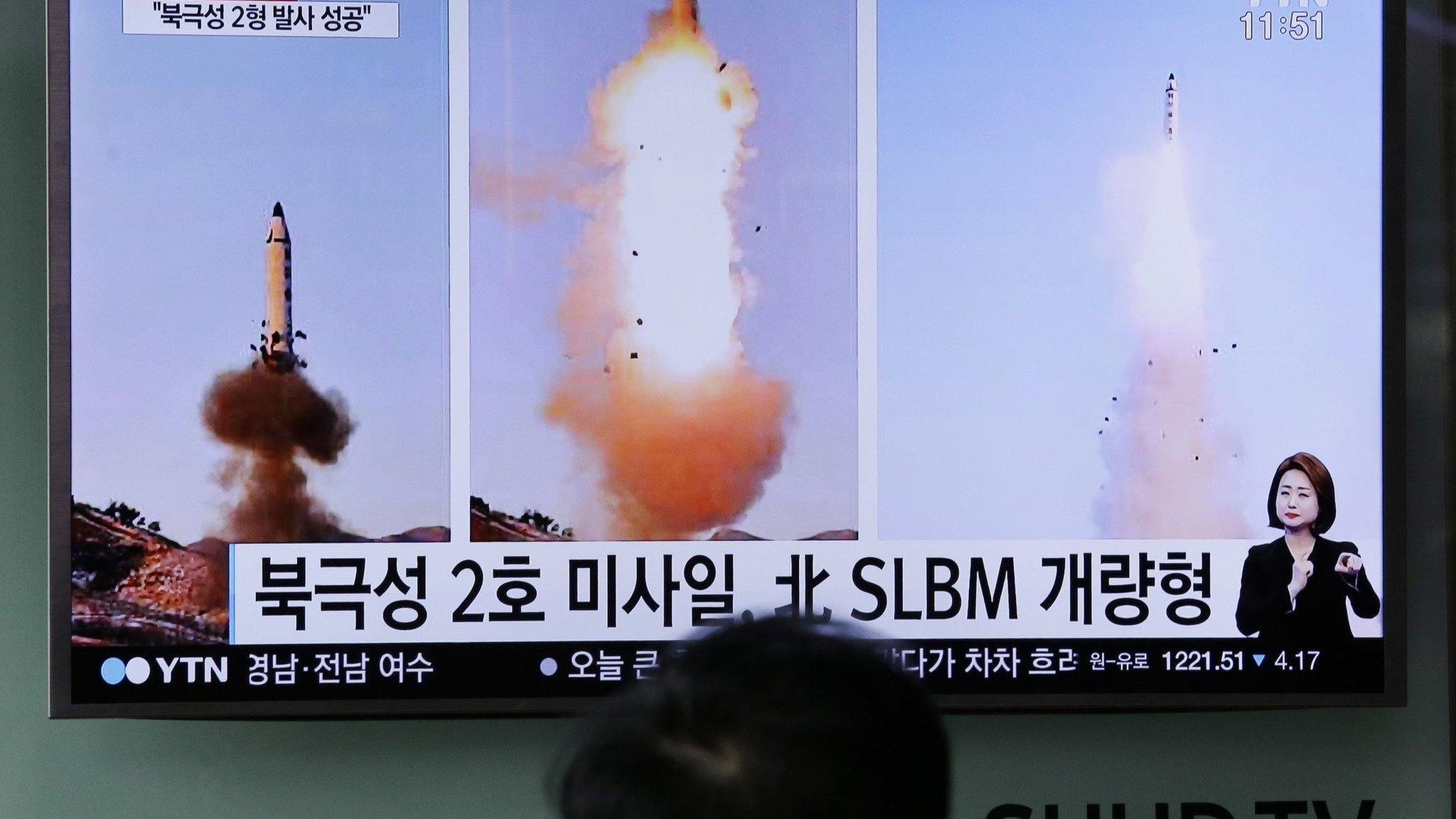North Korea missile test: What's changed?
- Published

The use of solid fuel reduces the time needed to launch the missile
On the morning of 12 February, North Korea conducted a ballistic missile test launch from Banghyon air base near the west coast of the country.
Like all such launches, the test took place in defiance of UN Security Council resolutions. Pyongyang's press release, issued a day later, indicated that the missile - the Pukguksong-2 - was of the same type as one test-fired from a submarine off the east coast in August 2016.
What is different about this missile?
Unlike North Korea's other long-range land-based missiles, the system tested on 12 February used solid fuel. Until now, the country's comparable land-based missile systems have been liquid-fuelled.
Pyongyang also announced that the launch vehicle carrying the new missile is indigenously made and uses a continuous or "caterpillar" track, rather than wheels with tyres.
Previously North Korea has imported and modified foreign-made trucks to transport and launch its missiles. A domestic manufacturing capability will negate the need to convince or fool foreign suppliers into selling these vehicles. Continuous track also suggests that North Korea's intention may be to take the missiles off-road, making it more difficult to detect imminent launches.
What are the implications of the use of solid fuel?
Missiles using liquid fuel require greater preparation time than those using solid fuel. They also require a larger constellation of support vehicles to accompany each launch vehicle. Both of these considerations make it more likely that an enemy might detect the missile in time to conduct a pre-emptive strike.
Solid fuel substantially reduces this vulnerability. North Korea will be able to roll these systems out of concealed storage and launch them with minimal preparation, drastically shrinking the time that an adversary would have to find and kill the missile. The capability thus represents a major step forward for North Korea.

Read more

What is a "cold eject" launch system?
There are two ways to launch missiles from their supporting vehicle's canister.
In "hot" launches, the missile's engines propel it upward out of the canister, while in "cold" launches, the missile is ejected from the canister using compressed gas before its engines ignite.
A cold eject approach spares the launch vehicle from damage from the missile's ignition, making it possible to reload it and reuse.
What does this test tell us about the trajectory of North Korea's missile development?
Kim Jong-un has hit the gas pedal on North Korea's nuclear and missile programmes.
In the past 13 months he has conducted two nuclear tests and launched over 20 ballistic missiles, including from a submarine. The demonstration of a long-range, solid-fuelled, land-based system is a continuation of this disturbing trend and one of the first significant foreign policy challenges that US President Donald Trump will be forced to grapple with.
- Published3 February 2017

- Published17 November 2016

- Published10 August 2017

- Published13 February 2017

- Published10 August 2017